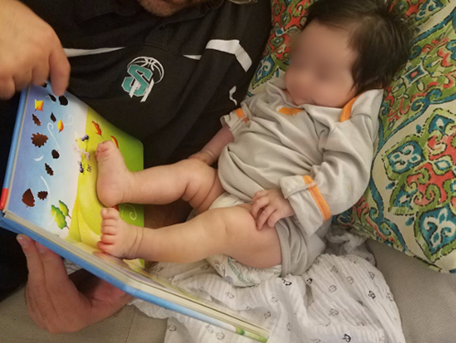6.5: Motor Development Trends
- Page ID
- 139865
Trends
The physical bodies of infants and toddlers show common growth trends and these trends relate to motor development. There are two important trends: cephalocaudal and proximodistal. The cephalocaudal trend acknowledges a top-down growth trend. For example, infants may use their upper limbs before their lower limbs. The proximodistal trend, on the other hand, acknowledges growth from the center of the body outwards. For example, infants use their arms before they can use their fingers effectively.

Resources on infant and toddler development sometimes mistakenly reference cephalocaudal and proximodistal trends as principles (i.e., Gonzalez-Mena, 2014). The reason they are trends and not principles is that they only describe what typically happens (a trend) as not all infants show motor development that exactly follows these trends. For example, research has shown that some infants will reach for and interact with objects using their feet before they are able to do so with their hands (Galloway & Thelen, 2004; Heathcock & Galloway, 2009), which does not follow the cephalocaudal trend. Figure# is a picture of an infant using both feet to interact with a book while being read to by a caregiver. [2]
[1] Image by Todd LaMarr is licensed under CC by NC 4.0.
[2] “Cephalocaudal trend” from Wikipedia is licensed under CC by SA 4.0.

